Nine significant non-COVID stories that happened in 2020
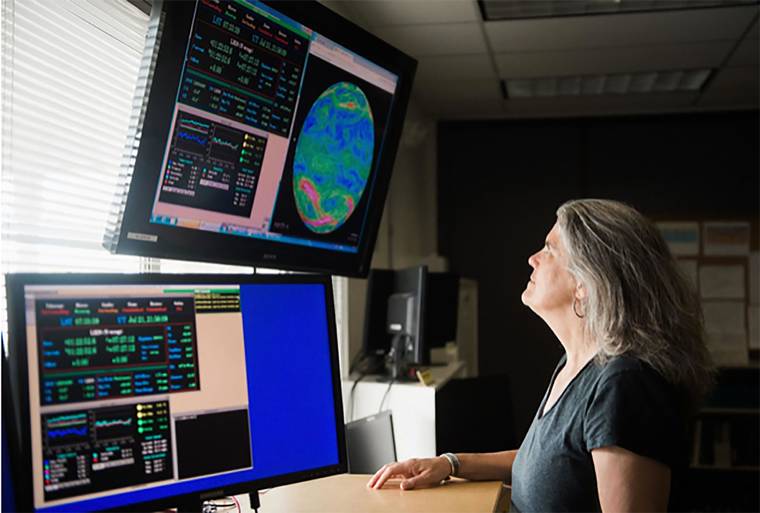
Andrea Ghez

Third Circuit Chief Judge Robert D.S. Kim administers the oath of office to Mayor Mitch Roth Monday at the West Hawaii Civic Center. (Laura Ruminski/West Hawaii Today)
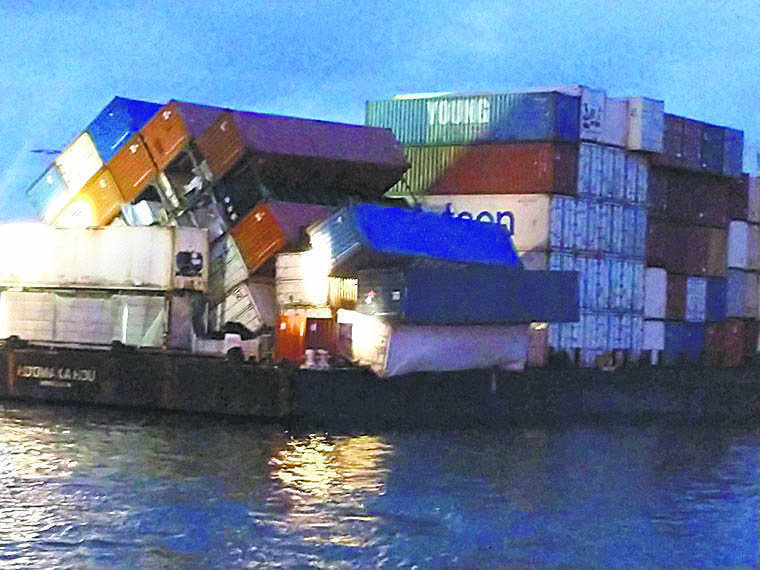
COURTESY SEN. KAI KAHELE Shipping containers aboard a Young Brothers vessel are seen in Hilo Harbor early June 22, 2020
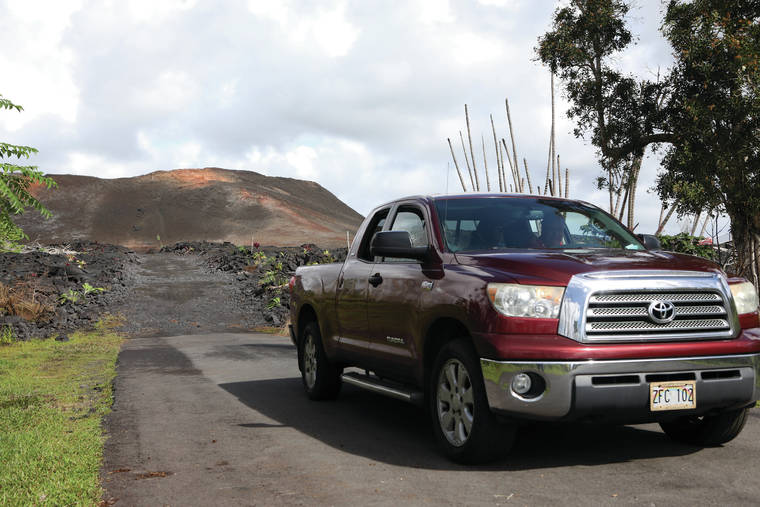
Kelsey Walling/Tribune-Herald People drive from the new road near Fissure 8 onto Malama Street in Leilani Estates on Tuesday, Dec. 29, 2020.
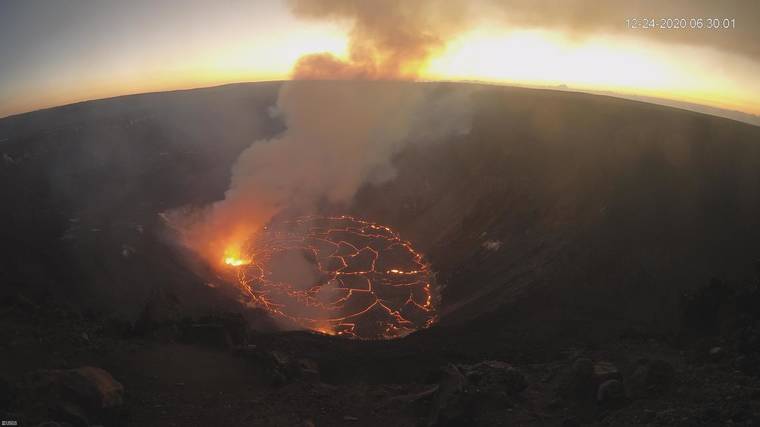
2020 December 24 CTY - USGS photo. Kilauea. Halemaumau. Kīlauea summit KW webam image taken on December 24, 2020, just after 6:30 a.m. HST. The water lake has been replaced by a lava lake; fissures in the wall of Halemaʻumaʻu feed a lava lake that continues to fill the crater. You can view live KW webcam images here. USGS photo.
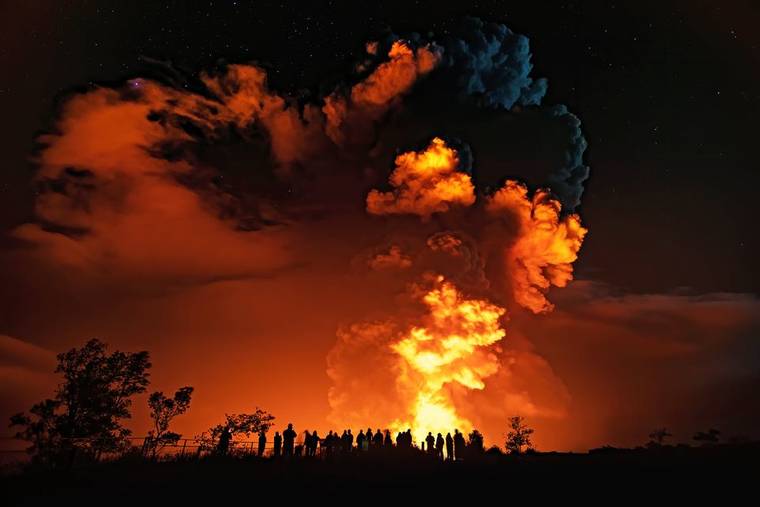
NPS Photo/J. Wei
Kilauea reawakens
Kilauea reawakens
Kilauea volcano, after more than two years of dormancy, erupted at its summit on Dec. 20 at about 9:30 p.m. Multiple fissures opened on the walls of Halema‘uma‘u crater, and lava cascaded into the crater’s water lake, boiling off the water and forming a new lava lake at the base of the crater. The northern fissure produced a lava fountain 165 feet high, and a magnitude-4.4 earthquake was recorded beneath Kilauea’s south flank at 10:36 p.m. Word of the eruption spread quickly via social media, with locals and visitors alike flocking to Hawaii Volcanoes National Park to view the lava. Emissions from the volcano blanketed West Hawaii areas with vog for the first time since the end of 2018 lower East Rift Zone eruption. As of Wednesday, the lava lake was about 591 feet, and all volcanic activity remained confined to Halema‘uma‘u.
Recovery continues
Meanwhile, the county continues recovery efforts from the 2018 lower East Rift Zone eruption that claimed more than 700 homes and other structures in lower Puna, covered 13.7 square miles in lava and created 875 acres of new land along the Puna coastline. On Dec. 4, the long-awaited Kilauea Recovery and Resilience Plan — a strategic document that will help guide the county’s recovery from the 2018 eruption — was released. According to the county, the plan builds on recovery initiatives that are ongoing and identifies additional projects that fit within three core strategies: eruption recovery, disaster readiness and community resilience. The plan identifies priorities for each project, steps to take, work already in progress, potential funding sources and project leads and partners. Atop the list are road restoration, including Pohoiki Road, Highway 137 to Vacationland near Opihikao, Lighthouse Road, and a section of Leilani Avenue to allow access isolated properties.
New mayor at the helm
Hawaii County now has a new mayor and elected prosecutor. Mitch Roth, who was the county’s prosecutor for eight years, was elected mayor over community organizer Ikaika Marzo in a runoff race in November’s general election. Roth, who was inaugurated Dec. 7, succeeded Harry Kim, an octogenarian who served 12 years during two stints as the county’s chief executive. Kim was eliminated from contention in August after finishing third in a crowded primary race. Kelden Waltjen, a deputy prosecutor who, at 33, was the youngest of three candidates in the August primary race to succeed Roth as prosecutor, won the job outright by garnering more than 50% of the vote, making a general runoff race unnecessary.
Power plants face lawsuits
Two controversial Big Island power plants have ongoing court cases — one fighting three Circuit Court lawsuits seeking updated environmental review, the other having filed suit in the state Supreme Court seeking to overturn a Public Utilities Commission ruling that could keep it from ever producing electricity. The three suits against Puna Geothermal Venture — which went back online in November with limited electricity production after having been partially destroyed by lava from Kilauea volcano in 2018 — claim the environmental impact statement on the project complete in 1987 is adequate and outdated. And Honua Ola, formerly known as Hu Honua, a nearly finished bioenergy plant in Pepeekeo, petitioned the state’s high court asking it to order the Public Utilities Commission to vacate a decision that, in effect, nullified an amended power-purchase agreement the plant had with Hawaiian Electric C0. That petition is still pending.
Solid waste issues persist
Solid waste issues, long a concern on Hawaii Island, remained so in 2020. The Hilo sanitary landfill closed in June, having reached its capacity. Now all East Hawaii landfill waste is trucked from transfer stations to the West Hawaii landfill in Puuanahulu. The county in 2020 issued numerous day-closure notices for transfer stations because of personnel shortages caused by the pandemic, often on the day of closure. Public complaints multiplied as the county cut back in early April on services such as scrap metal disposal, HI-5 redemption, green waste, reuse and electronic waste disposal when the stay-at-home order went into effect. The county inked a $10.5 million contract with Hawaiian Earth Recycling in 2016 for a large composting facility in Keaau, but that contract remains on hold, hostage to the coronavirus pandemic under an “act of god” abeyance clause.
Interisland shipping woes
Young Brothers increased its rates by 46% in September after the state’s Public Utilities Commission granted the interisland ocean cargo shipper’s request for an emergency rate increase. The company said the massive rate hike, expected to increase revenue by $27 million, won’t result in a profit. The commission noted in its ruling that “Young Brothers’ financial issues, including rising operating expenses and declining cargo volumes and revenues, began well before the current economic downturn.” In late June, the state House Finance Committee rejected a proposal to give the ocean cargo company $30 million in federal coronavirus relief funding to avoid a shutdown of its service. Young Brothers had requested $25 million in coronavirus aid to remain afloat. That was a about a week-and-a-half after Young Brothers reported 21 shipping containers fell into the ocean from one of its barges at it approached Hilo. The company said it was the first time in 20 years containers had fallen overboard from one of its barges.
TMT on hold and decommissionings move forward
The $2.4 billion Thirty Meter Telescope project on Maunakea was put on hold by the pandemic — as have the demonstrations that brought thousands of project opponents to Maunakea Access Road to keep construction vehicles and materials off the mountain. The protesters, who call themselves “kia‘i” or protectors, say the mountain is sacred. Earlier in December, the county’s Board of Ethics ruled former Mayor Harry Kim violated the county code against unfair treatment when he allowed protesters to close Maunakea Access Road to some people but not others. The vote came less than 48 hours after Kim left office, putting him out of reach of any county penalties. Off-site, the building of components for the next-generation observatory, including the dome, continues. Also continuing are preparations to decommission five telescopes on Maunakea in exchange for the planned construction of TMT. The first is Hoku Ke‘a, the University of Hawaii’s small teaching telescope. The 36-inch telescope was removed in 2018, but the building that housed it remains on the summit. It is to be removed by the end 2021 at a price tag of $1.3 million, but it’s unclear if the pandemic will affect those plans.
Police accountability enhanced
Police transparency and accountability increased in 2020 with Gov. David Ige signing into law a bill that would identify suspended or fired county police officers and Hawaii County outfitting officers with body-worn cameras.
Under House Bill 285, now Act 47, Hawaii’s four county police chiefs will be required to disclose, in annual reports to the state Legislature, the identity of an officer upon an officer’s suspension or discharge from a county police department once the grievance procedure has concluded. That means officers suspended or discharged between Jan. 1 and Dec. 31 of this year would be included in the next report to the Legislature due by Jan. 31, 2021. Additionally, the bill would eliminate the exemption for county law enforcement officers under the Uniform Information Practices Act, allowing for the release of information retroactively upon request.
During 2020, the Hawaii Police Department rolled out its body-worn camera program, outfitting all officers with patrol duties by Christmas Eve. About 300 officers are now wearing the Axon Body 2 cameras, which record public encounters with police in 720p high-definition video. Officers will activate them when they have contact with the public in a law enforcement capacity such as on traffic stops, during arrests, or any call they are assigned to respond to. They will stop the recording once they are done with that incident. The cost of the system over five years is $1.8 million.
Scientists with Big Island ties awarded Nobel Prizes
Two scientists with Big Island ties were awarded Nobel Prizes in October. Biochemist Jennifer Doudna, a 1981 graduate of Hilo High School and a professor at the University of California, Berkeley, and her research partner, Emmanuelle Charpentier, a French microbiologist, were awarded the Nobel Prize in chemistry. The pair developed CRISPR-Cas9, a gene-editing tool that has revolutionized science by providing a way to alter DNA. A day earlier, the Nobel Prize in physics was awarded to Andrea Ghez, a University of California, Los Angeles, astronomer. Her two decades of observations proving the existence of a massive black hole at the center of the Milky Way galaxy were performed at W.M Keck Observatory on Maunakea.


